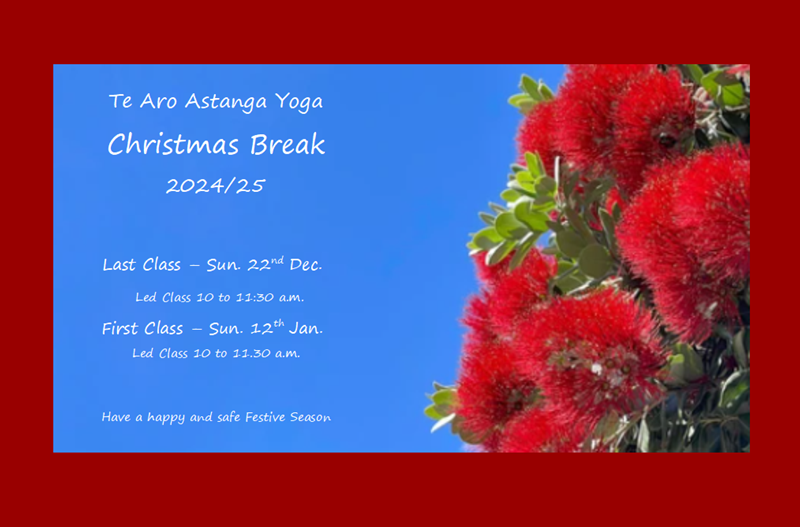My Guru, Sri K Pattabhi Jois of Mysore, India said to me on numerous occasions “First, master asana, then take Pranayama. When you have mastered Pranayama, then take meditation”. What I find amazing (and I think he did too) is that we Westerners seem to think that mastering asana will only take a couple of years, 5 tops and then we will be ready to move on. Samadhi here we come! I began my yoga practice in 1992 and have been practicing asana regularly 4-6 times a week since 1993 and the more I do the more I know I have to learn. Every practice I do uncovers some new subtlety or nuance to some asana. I believe that to master asana takes more than one life time of effort. This may be daunting for some, but I find it liberating. It means there is no pressure. I can take my time and enjoy the process.
I recently read an advertisement for a meditation workshop that had the by-line “do you find that the good feeling you get from asana is short-lived? Want to take your practice to the next level?” There seems to me a lack of understanding there that comes from a lack of guidance. Perhaps the reason that the feeling is short lived is that you need to put more work into your asana practice. How can we know that we have mastered asana and are ready to move on? Our teacher, who has themselves worked through this process with their teacher, will be able to tell us. This is not a decision we can make for ourselves!
Why the need to work so much on asana? After all, as Bryant says:
..from the the 900- odd references to yoga in the Mahabharata, there are only two mentions of asana, posture…… Patanjali himself dedicates only three brief sutras from his text to this aspect of the practice1.
My feeling is that at the time of Patanjali and the Mahabharata mastery of asana by yoga practitioners was assumed. In modern times that assumption can not be made. We need to start from the absolute beginning. Pattbhi Jois always said that without adequate asana practice a person’s nervous system and the system of Nadis would not be able to cope or get any benefit from Pranayama or meditation. Sure, you can sit there and breathe through the nose blocking one nostril and then the other, but you may be fooling yourself if you think this is the Pranayama of Ashtanga Yoga. This is not to say that there is not benefit from these practices, and indeed, many people do derive great benefit from doing various forms of breathing exercise and meditation practice. But without the strength of body and strength of purpose that regular asana practice gives, you will have a very tall mountain to climb. “Practice, practice, practice” as Guruji always said. And don’t forget to revel in the journey. Enjoy.
1Bryant, F. 2009 The Yoga Sutras of Patanjali. North Point Press, New York. p.xxx

0 Comments